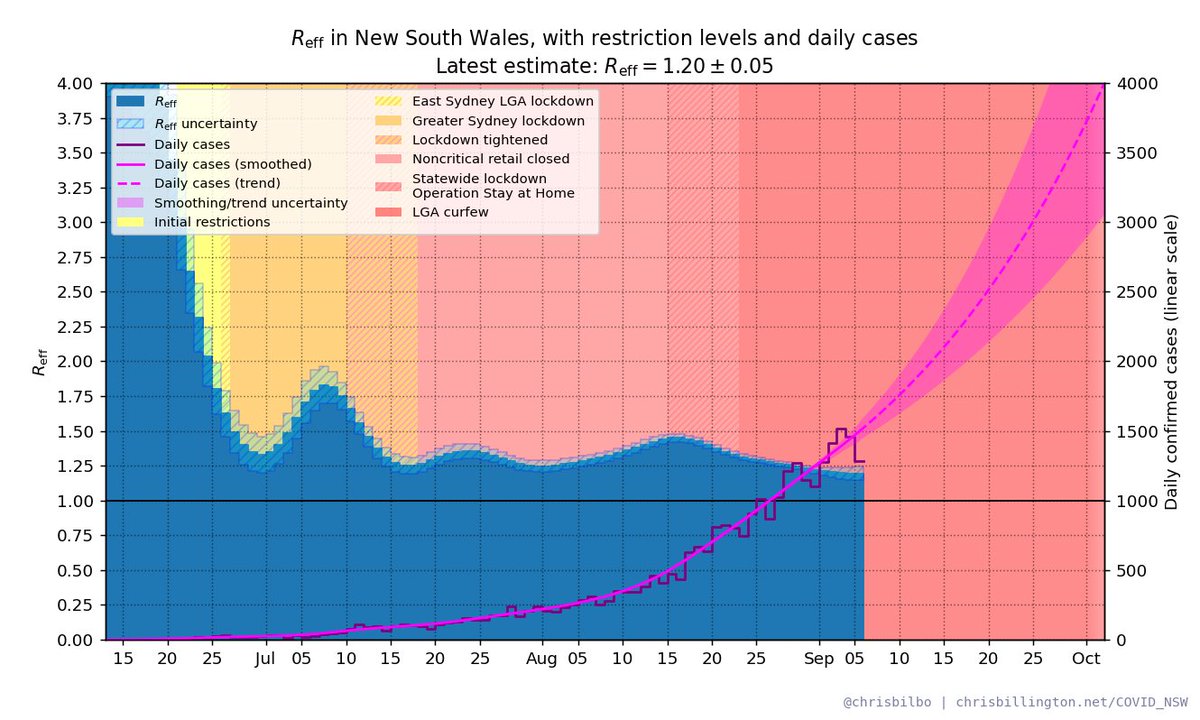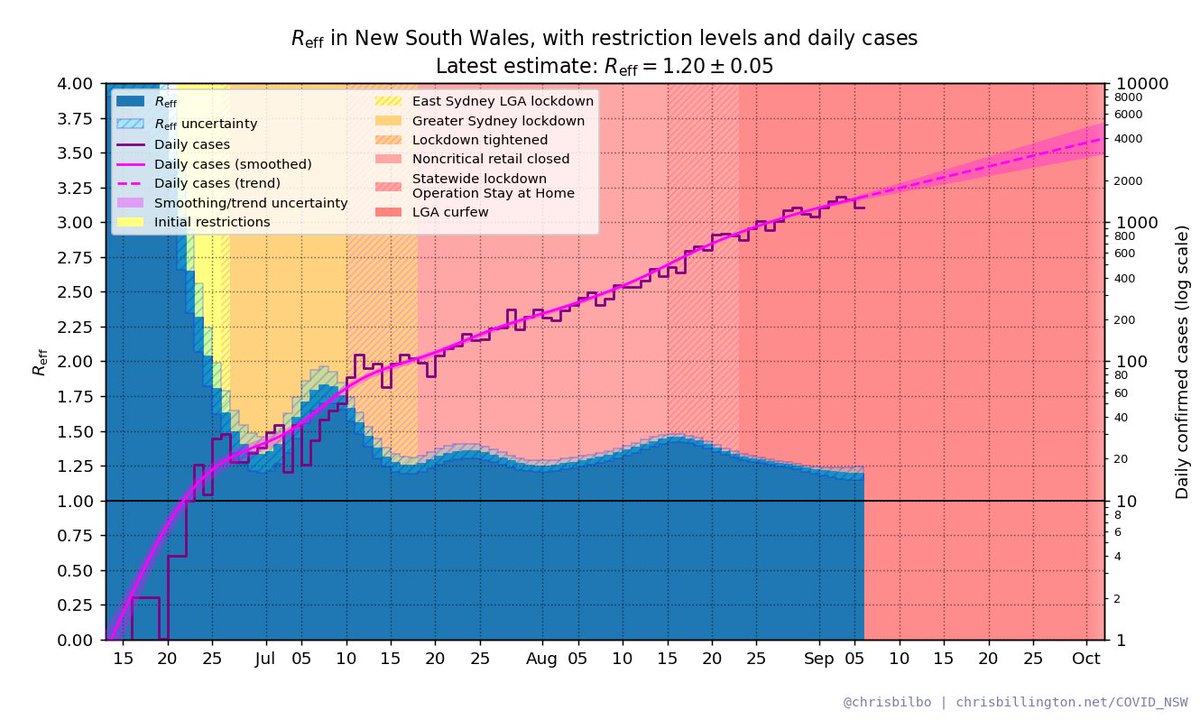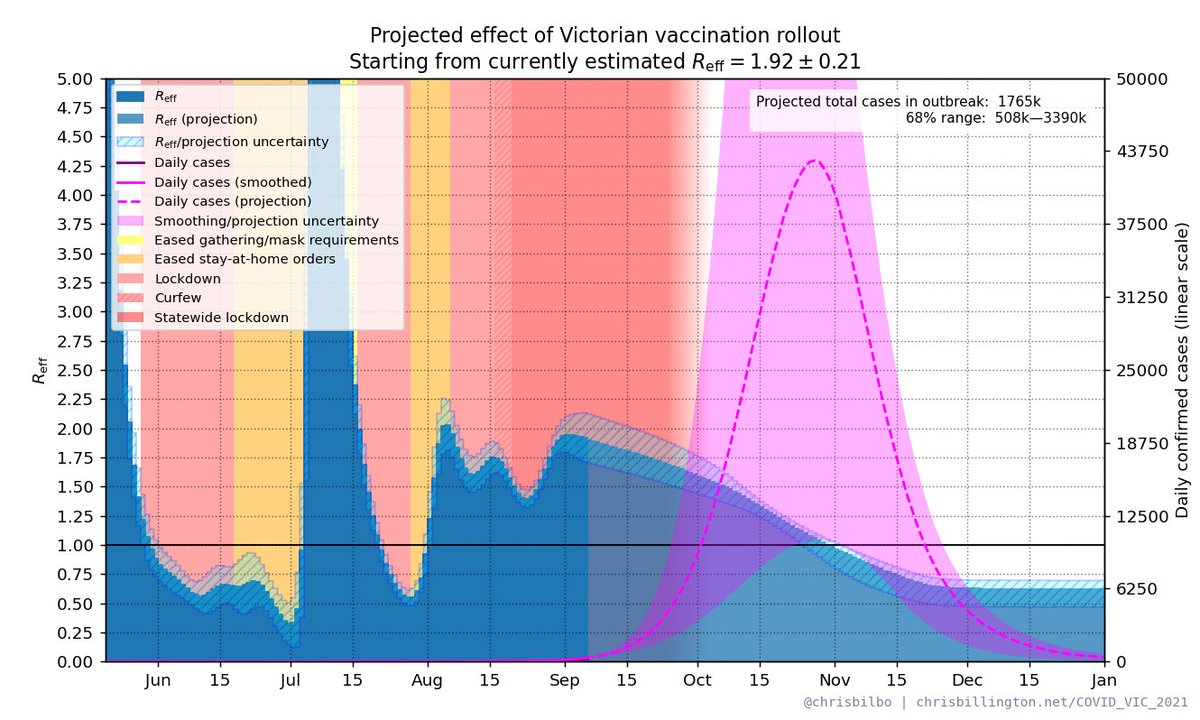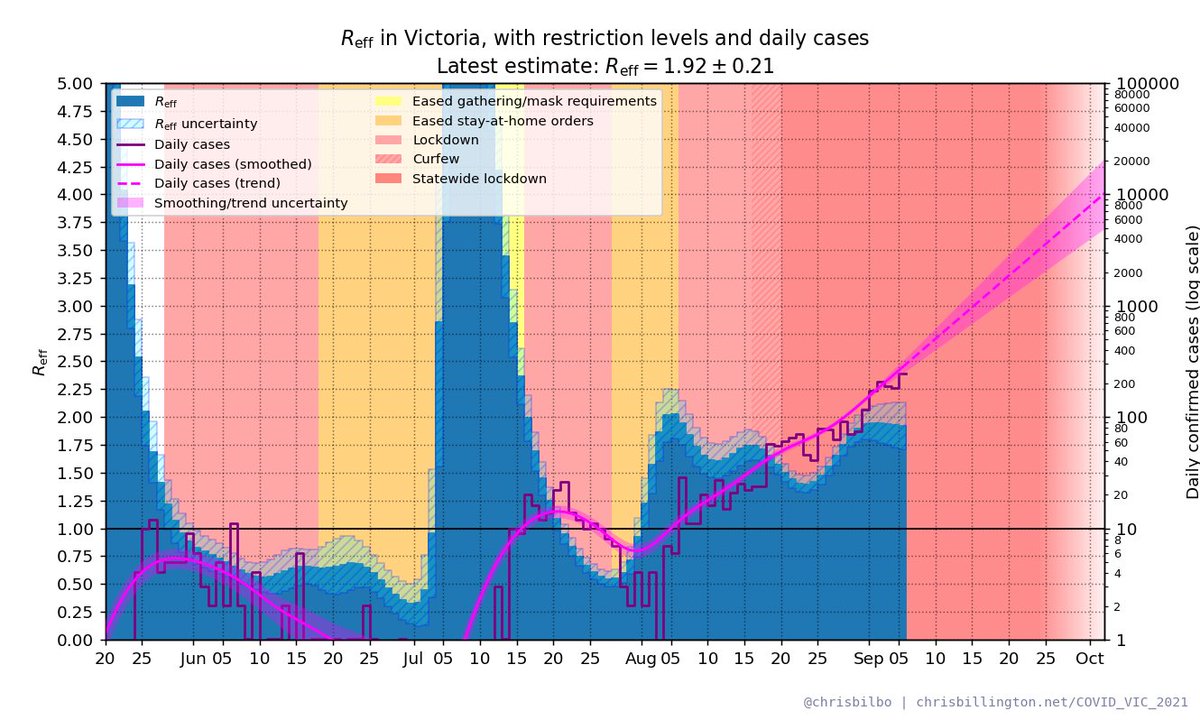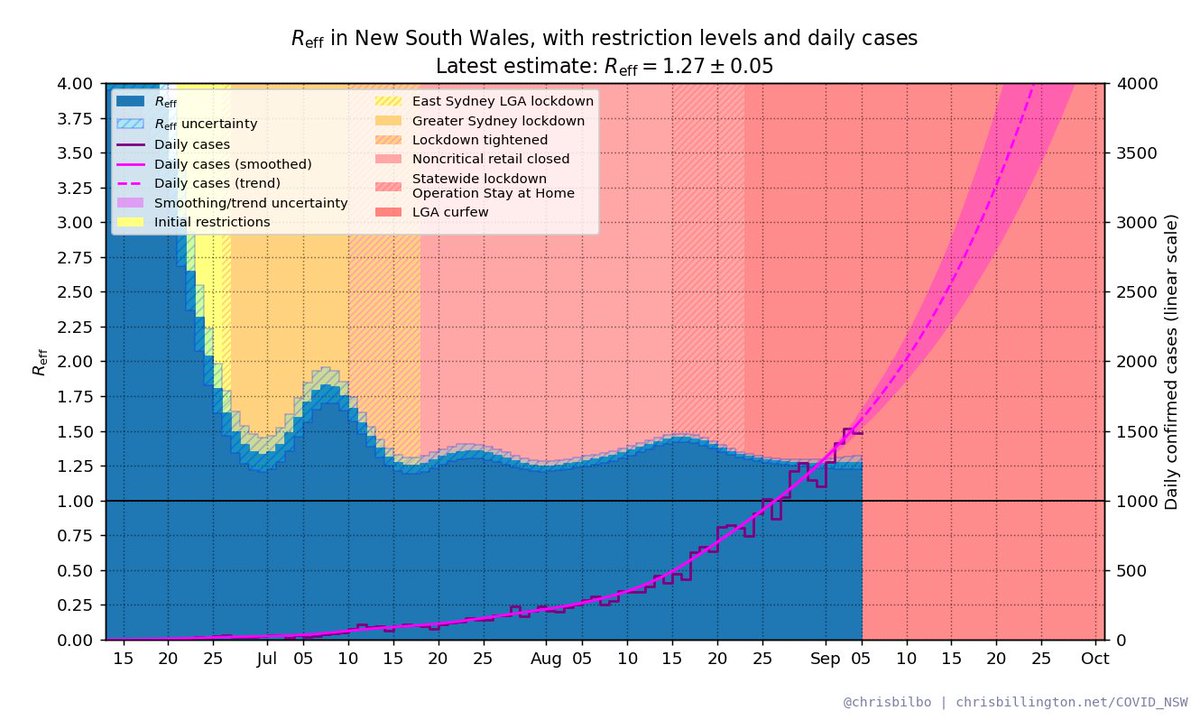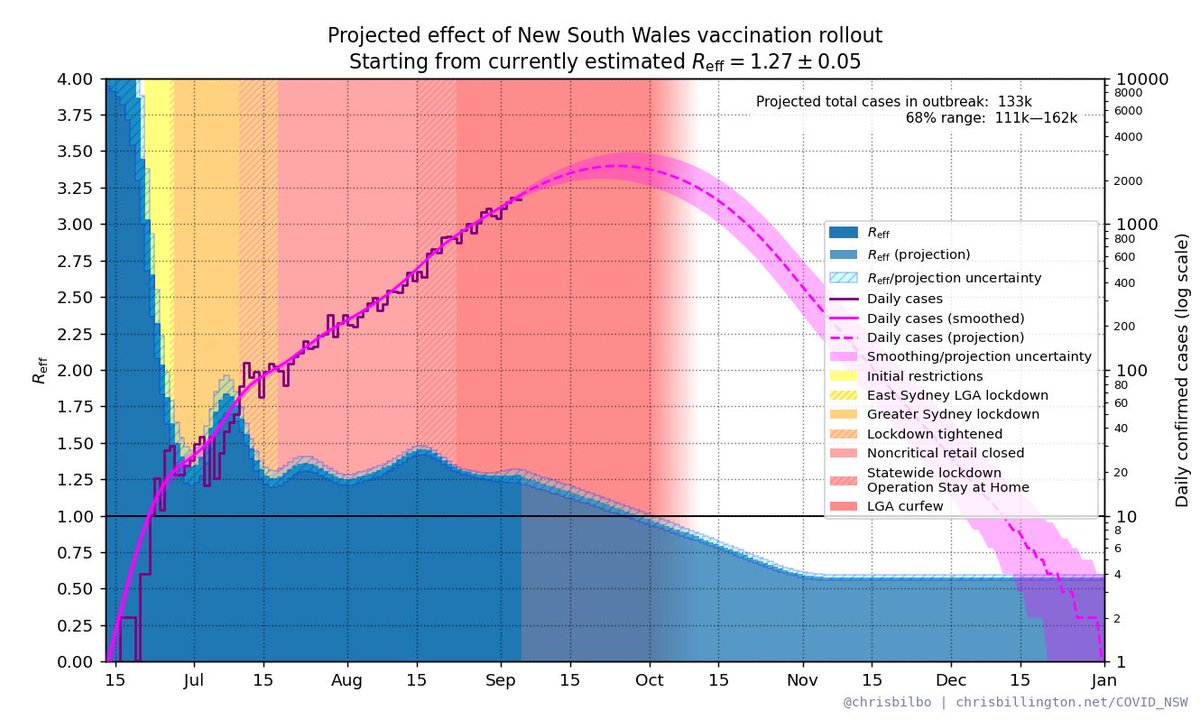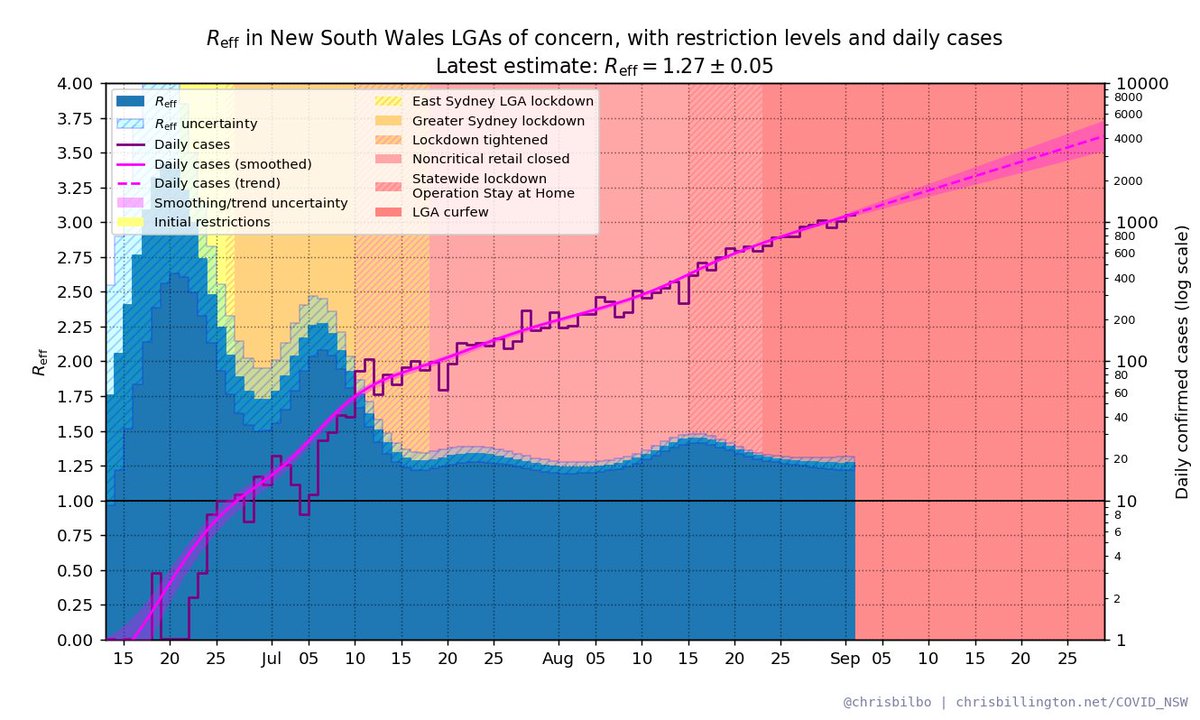
VIC R_eff as of September 5th with daily cases and restrictions. Latest estimate: R_eff = 1.89 ± 0.22
Plus projected effect of vaccination rollout.
Cases shown on a linear scale (log scale in next tweet).
More info chrisbillington.net/COVID_VIC_2021…
#COVID19Vic

Plus projected effect of vaccination rollout.
Cases shown on a linear scale (log scale in next tweet).
More info chrisbillington.net/COVID_VIC_2021…
#COVID19Vic


VIC R_eff as of September 5th with daily cases and restrictions. Latest estimate: R_eff = 1.89 ± 0.22
Plus projected effect of vaccination rollout.
(Cases shown on a log scale)
More info chrisbillington.net/COVID_VIC_2021…
#COVID19Vic

Plus projected effect of vaccination rollout.
(Cases shown on a log scale)
More info chrisbillington.net/COVID_VIC_2021…
#COVID19Vic

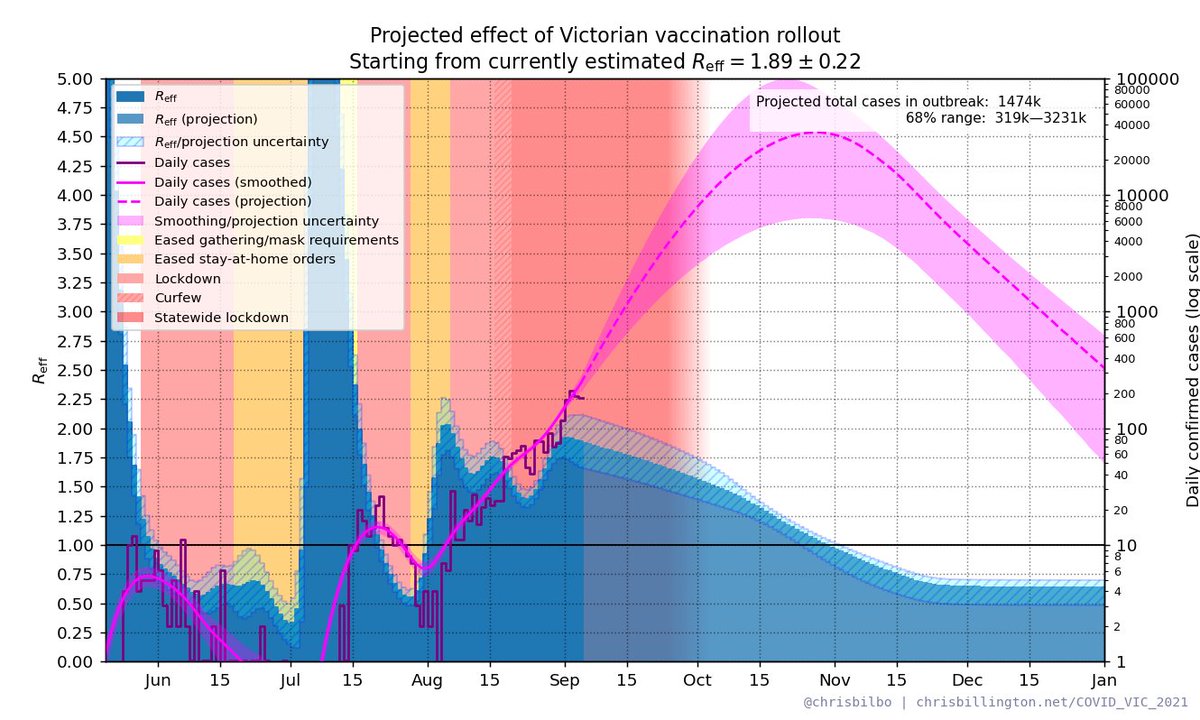
Expected numbers if the current trend continues:
day cases 68% range
Mon: 281 192—378
Tue: 329 207—466
Wed: 384 221—573
Thu: 447 237—704
Fri: 520 251—864
Sat: 603 265—1054
Sun: 697 279—1285
Doubling time is 5.5 days.
#COVID19Vic
day cases 68% range
Mon: 281 192—378
Tue: 329 207—466
Wed: 384 221—573
Thu: 447 237—704
Fri: 520 251—864
Sat: 603 265—1054
Sun: 697 279—1285
Doubling time is 5.5 days.
#COVID19Vic
It looks like we're not seeing the same explosive growth as the surge a few days ago, which is good news. It will take time for this to be reflected in the R_eff estimate since it averages over many days, but it's looking likely these projections will come down.
So you still shouldn't trust this projection as it stands right now. Unless we get another surge in case numbers, the projection should become more reasonable in the coming days.
• • •
Missing some Tweet in this thread? You can try to
force a refresh



